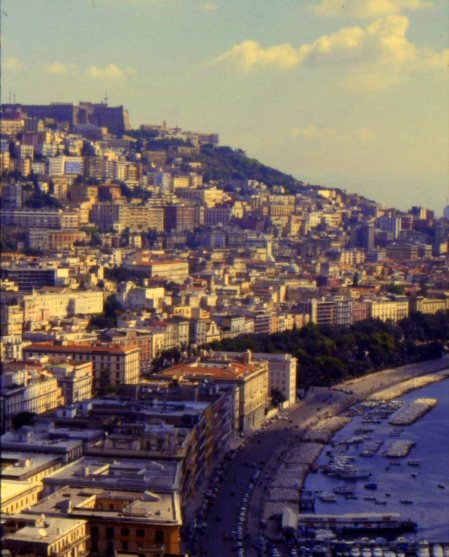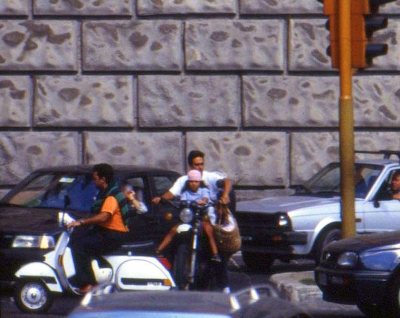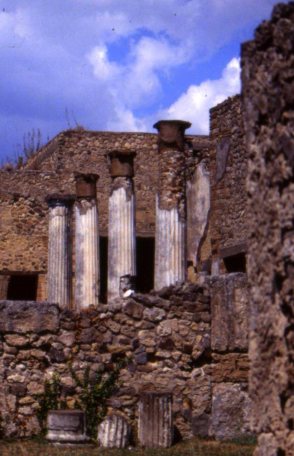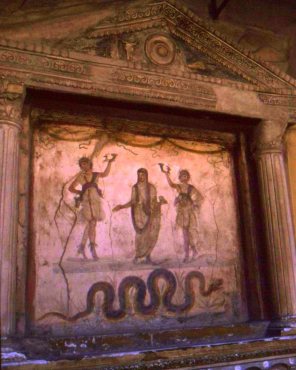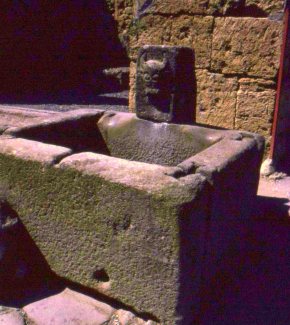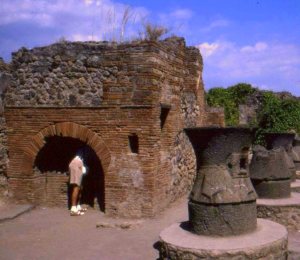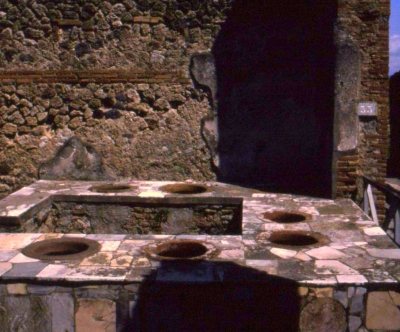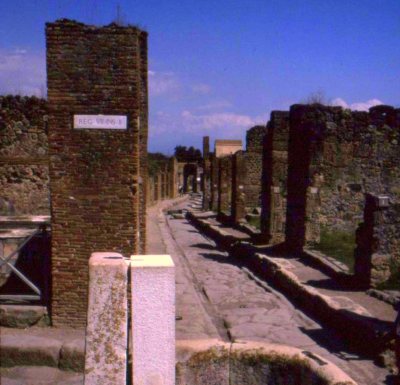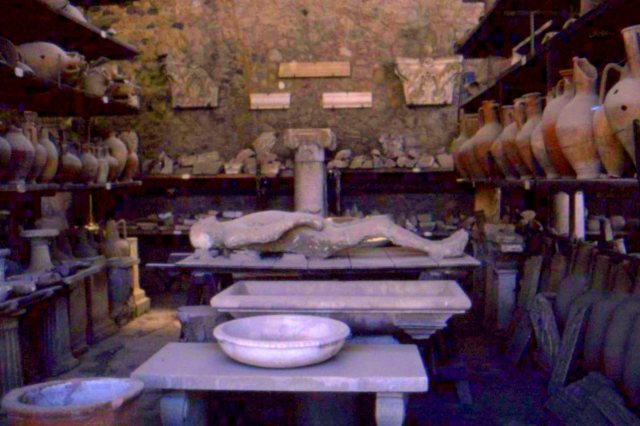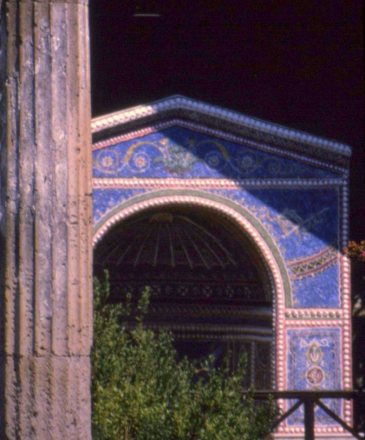With only two days remaining after the cruise ship docks for the final time at Rome’s port of Civitavecchia, I opt to spend one of them visiting Pompeii, which 3 hours away via the autostrada just below Naples.
A travel oasis along the way looks far more like a page out of the Dean & Deluca catalog than an Interstate eatery.
Cured hams hang in the window and a bank of glistening espresso machines sits behind a long marble counter.
There seems to be no such thing as fast food in Italy, and taste confirms that it’s for delectably good reason.
An hour or so outside of Naples the road passes a hilltop crowned by the monastery of Monte Cassino.
Founded by Saint Benedict on the site of a former Roman temple to Apollo, it has been repeatedly sacked by invading armies and destroyed three times, the last during a bloody four month siege of an entrenched German army early in 1944.
About 15 miles short of Pompeii, the route passes through Naples. The old part of the city is the vintage Italy of ‘50’s cinema. Palm trees line the harbor and ferries carry day-trippers to the Isle of Capri clearly visible on the horizon 30 miles away.
Narrow streets climb hillsides through ancient tenements broken from time to time by the uninspired concrete architecture of post-war buildings that mark the scars of more than 200 Allied bombings. Poverty is rampant in many of these neighborhoods, where over 100 clans of the Camorra – the local version of the Mafia – control not only criminal activity, but thousands of legitimate businesses. Visitors are warned not to wander unfamiliar streets here alone. There’s no lingering here; Pompeii beckons!
Mount Vesuvius squats between Naples and Pompeii, towering nearly a mile high and squeezing the coast road against the sea. It’s experienced more than 30 major eruptions since the one that buried Pompeii in 79 A.D., the last occurring shortly after the arrival of Allied armies in 1944.
The first sight of Pompeii’s streets is breathlessly arresting. Unlike other often-vandalized ruins, it was protected for 17 centuries by a cocoon of volcanic ash.
The power of this place is not just the number of buildings left remarkably intact, but the distinctive window afforded into the daily lives not only of well-to-do Romans who vacationed there, but the service workers who supported their leisure. Artifacts excavated over the last 300 years and now on display are personal and intimate. Makeup cases and hair combs. Pocket change. Beautiful mosaics and frescos in still-vibrant colors adorn the floors and walls of spacious villas, many featuring portraits of their owners.
This city of 20,000 boasted an amphitheater, forum, gymnasium and hotel. Fountains and public baths were once fed by an aqueduct.
At vacant curbside food stalls, brick ovens stand at the ready and empty stands await the arrival of wine amphoras.
Tracks are worn into stone streets by chariot and wagon wheels. The cubicles of a bordello stand open in invitation and graffiti and pornography adorn street walls.
By far the most startling of artifacts, though, are plaster castings made of victims – residents and even household pets – entombed in volcanic ash by the tragedy, their flesh long ago wasted away to leave only vacant impressions. It’s otherwise hard to dismiss the illusion that the residents have just stepped out, to shortly return.
Before the long ride back to Rome there’s dinner – and an obligatory taste of the local limoncello liqueur – at a charming hotel restaurant in nearby Sorrento, which marks the beginning of the hairpin thread of highway that travels the scenic Amalfi coast.
By the time I step again onto Rome’s Via Veneto and pass through the lobby of the Hotel Excelsior17 hours have passed, but it’s a delicious exhaustion! In the morning it’s on to Da Vinci Airport and the flight back to the States, the fresh memories of a week-long Mediterranean cruise still playing in my head.
If you’ve missed any of the earlier posts for this cruise – or want to revisit any – you’ll find them here:
- Days 1-2: Barcelona
- Day 3: Montserrat Monastery
- Day 4: France’s Languedoc
- Day 5: Monaco & the French Riviera
- Day 6: Italy’s Cinque Terra
- Day 7: Rome

